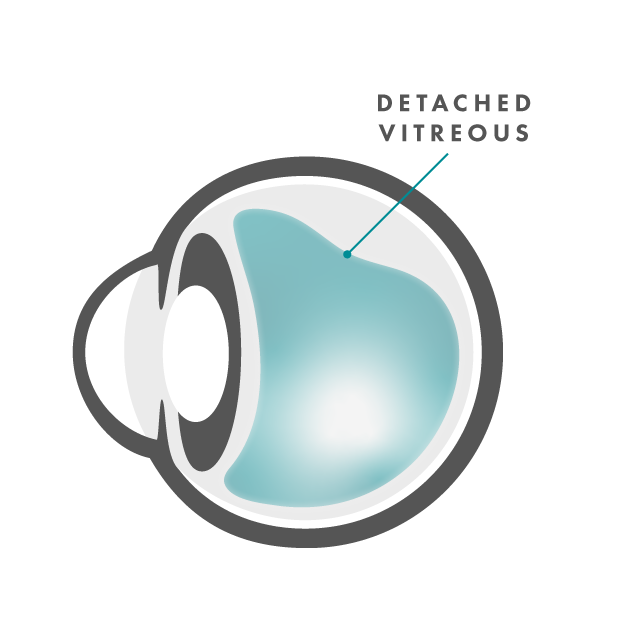Flashes & Floaters
Causes of Floaters
Most of the eye’s interior is filled with a transparent gel-like substance known as the vitreous. There are millions of fine fibers intertwined within the vitreous that anchor it to the retinal surface. As we age, these fibers may begin to collapse in on themselves thus creating small pockets of opaque material that can cast small, amorphous moving shadows on the retina. These shadows are then perceived as little “cobwebs” or specks that seem to float about in your field of vision. This is why they are typically referred to as “floaters.”
Causes of Flashes
Fluid begins to replace the area previously occupied by the shrinking vitreous. Usually, the attachments of the delicate fibers to the retina loosen and fall harmlessly away, creating what is known as a posterior vitreous detachment (PVD). Sometimes, the process is more significant and actual traction is generated upon the retina. This produces quick flashes of light that can be perceived, oftentimes in one’s peripheral vision.
How Common are Posterior Vitreous Detachments?
A vitreous detachment is a common condition that usually affects people over age 40, and is quite common after age 65. People who are nearsighted are also at increased risk. Those who have experienced a vitreous detachment in one eye are likely to eventually have one in the other eye, though the second detachment may occur years later.
When the vitreous gel separates from the retina, the resulting condition is known as a posterior vitreous detachment (PVD).
Consequences of PVD
In most cases, a vitreous detachment is not sight-threatening and requires no treatment. In mild cases, a vitreous detachment will not be particularly noticeable. In some cases, the appearance or increase in floaters will be noticeable, but not particularly bothersome. In other cases, the floaters may be so numerous and bothersome as to interfere with daily activities of living. In those cases, a removal of floaters by vitrectomy may be an option to discuss with Dr. Jiménez.
In some patients, the vitreous fibers pull so hard on the retina that they can cause a retinal tear or hemorrhage. A retinal tear is sight-threatening because it can be is the first step towards a retinal detachment. Treatment is frequently needed right away. This is why anyone who experiences a sudden increase in floaters or in flashes should have an eye doctor examine their eyes as soon as possible.
Treatment for Flashes and Floaters
In some cases, floaters may become less noticeable over time. In other cases, floaters can be persistent, annoying and cause frustration. In many cases patients may be content to take a “wait and see” approach to see if the body may reabsorb them. In other cases, floaters may interfere with vision to the point that patients want them removed.
If floaters are interfering with your daily activities of living and your general quality of life, Dr. Jiménez may consider removing them via a vitrectomy procedure. The only way to know with certainty if serious problems exist is to have a comprehensive, dilated eye examination.



